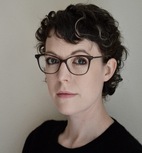
Academics . Liberal Arts . Courses
Liberal Arts Courses
Critical Issues in Visual Culture
Course No. AC 150 Credits: 3.0
This discussion-style course will introduce students to the following: critical theories and methods of analysis for interpreting modern and contemporary visual art and culture; major themes in visual culture, including trends and issues specific to design. 3 credits.
Themes & Movements in Art & Design History
Course No. AC 250 Credits: 3.0
This course examines significant developments and themes in art and design history from the pre-modern through modern periods. While selected movements, chronologies, and works from standard surveys of art history will be touched upon where pertinent, the course will take varied approaches to overarching debates, narratives, and theories: e.g., the persistence of classicism and its continued symbolic meaning in art, architecture, and the city; and the representation of the body since antiquity; and social and political identity and visual expression. 3 credits.
Visual Culture and the Manufacture of Meaning
Course No. AC 305 Credits: 3.0
This course will introduce students to critical theories and methods of analysis for interpreting contemporary visual art and culture. Topics include: formalism and stylistic analysis; semiotics and structuralism; Marxist theory; biography; psychoanalytic theory; feminist analysis and gender studies; postcolonial theory; post structuralism and postmodernity; and media arts studies (electronic/digital technologies). Select interpretive frameworks employed in the “manufacture of meaning” will be situated historically and discussed fully and critically, using seminal writings. Prerequisites: AC 150 and AC 250 or Corequisite: AC 250. 3 credits.
Issues in Design: Theory & Culture
Course No. AC 316 Credits: 3.0
What exactly is the "culture" of design? We will explore the interndisciplinary aspects of contemporary design practice and theory in relationship to the complexities of culture and society, especially with respect to urban environments. We will move from conventional considerations of thehistory of modern and postmodern art and design, to a broader contemporary understanding of design with respect to globalization, consumerism, technological change, sustainability, infrastructure, city planning, urban design, and alternative trends. Prerequisites: AC 150 and AC 250. Corequisite: AC 250. 3 credits.
Race & Representation in Contemporary Art and Culture
Course No. AC 321 Credits: 3.0
This seminar-style course considers the relationship between race and representation in visual art and culture during the last three decades using contemporary methods including multi-culturism and postcolonial theory. We will discuss and analyze examples of contemporary art as well as popular culture drawn from advertisements, animation, film, the internet, installation and performance art, sculpture, photography, television, and video. The focus will be on American culture, but discussions will also include the cultural contexts of Africa, the Caribbean, Europe, and Latin America. In addition to the primary focus on the representation of race, questions of class, sexuality, and gender will also be considered. Questions to be addressed include: Is race largely a biological or cultural phenomenon? How are “white” and “mixed-race” understood as racial categories? How have artists of different races dealt with racial identity and representation? Do popular media such as commercial advertisements and music videos convey prevailing notions of racial stereotypes? Prerequisites: AC 150 and AC 250 or Corequisite: AC 250. 3 credits.
African American Art
Course No. AC 334 Credits: 3.0
This course covers African American art from the late 1700s to the present emphasizing the formal qualities of art as well as the social and cultural contexts within which it was created. Lectures and assigned readings are drawn from the scholarship of art history, literature, anthropology and history. We examine works by U.S. Artists of African descent and others who engage aspects of African American life and culture. Prerequisites: AC 150 and AC 250 or Corequisite: AC 250. 3 credits.
Modernism in Latin America
Course No. AC 343 Credits: 3.0
Whether one considers constructivist sculpture, architectural design, photography, painting, printmaking or decorative arts, much of the 20th century art production in Latin America countries is best understood in terms of the struggle to assimilate, redefine and/or resist styles and concepts of “modernism.” In this course, we will consider how 20th century Latin American art and artists have been interpreted vis-a-vis trends in Europe and the United States, paying particular attention to how issues of cultural and economic exploitation created unique types of personal and national identity. In addition to analyzing the works of such well-known artists as Diego Rivera, Frida Kahlo, David Alfaro Siqueiros, Jose Clemente Orozco, Wifredo Lam and Oscar Niemeyer, classes will be arranged thematically to better explore developments in various media and to draw distinctions among the arts of various countries, especially Mexico, Puerto Rico, Cuba and Brazil. Prerequisites: AC 150 and AC 250 or Corequisite: AC 250. 3 credits.
The Body: From the Historic to the Contemporary
Course No. AC 359 Credits: 3.0
This course explores one of the most important themes of art: the body. Discussions will center on a complex range of ideas and values associated with the body as depicted in painting; sculpture; photography; instalation; performance; video; etc. We will examine shifting presentations with a consideration of what such work tells us about the views and circumstances they may reflect. These investigations will be undertaken through a variety of lenses: formal; political; social; personal, etc. We will consider the role of authorship and cultural context in shaping a work. While the historical evolution and foundations of art work centering on the body will be reviewed, the focus of the courses is on work made since 1945 to the present. Additional topics: the traditional nude; conceptions of beauty; power relationships; conceptions of gender, race, class; gaze theory; identity and performance; etc. Prerequisites: AC 150 and AC 250 or Corequisite: AC 250. 3 credits.
Meet Your Faculty view all
Gemma Sharpe
Assistant Professor
Gemma Sharpe is an art historian specializing in modern and contemporary art from South Asia, Cold War histori...more
Our connections are your connections.
While at CIA, you'll learn from the masters through our rigorous, world-class curriculum and connect with working professionals to begin your career.
